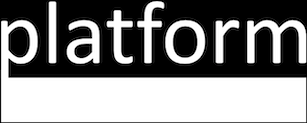In 1957 DARPA (Defense Advanced Research Agency) was formed by the United States government in response to the Soviet Union’s surprise launch of its Sputnik satellite in 1957. DARPA’s noble mission from that day forward was to ensure that the United States would be “the initiator and not the victim of technological surprises.”
Now, in 2022, all the countries of the world recognize the unparalleled success that DARPA has enjoyed by investing in deep technologies over the last sixty-five years. It has focused on both “high risk - high reward” technological breakthroughs, and its successes have been legendary:
The Internet
GPS
Automated voice recognition
Stealth technology
Unmanned aerial vehicles
Moderna’s COVID-19 vaccine
Weather satellites
Drones
and much, much more
Siri, the company I co-founded at SRI, owes much of its success to DARPA as well. Prior to our creating Siri, DARPA had funded the CALO program at SRI. CALO stands for “Cognitive Assistant that Learns and Organizes.” This program inspired us to create a cognitive assistant for the world - and we called it “Siri.”
There were two critical questions that DARPA had to solve:
- How does DARPA make its investment decisions? What is high enough risk, and high enough reward?
- How does it decide what risks are worth taking?
What is remarkable about DARPA is its success in choosing which technologies and researchers in which to invest. There is a plethora of technological advances that researchers in the United States might propose. My guess is that DARPA receives dozens to hundreds of bids for each proposal and awards only a few.
The answer, at least in part, is the Heilmeier Catechism. The Heilmeier Catechism is famous for its role as a fundamental tenet of DARPA’s ability to identify and invest in great technologies. It’s called a “catechism,” somewhat tongue-in-cheek since it is a series of questions and answers similar to what might be done via religious instruction.
The Heilmeier Catechism
The Heilmeier Catechism is a set of questions that was originally developed at DARPA by George H. Heilmeier, a former DARPA director. Every program manager at DARPA—working together with the research team they hoped to fund—was required to answer these straightforward questions in order to evaluate their potential for success.
- What are you trying to do? Articulate your objectives using absolutely no jargon.
- How is it done today, and what are the limits of current practice?
- What is new in your approach, and why do you think it will be successful?
- Who cares? If you are successful, what difference will it make?
- What are the risks?
- How much will it cost?
- How long will it take?
- What are the midterm and final “exams” to check for success?
Simple, right? They seem at first to be easy and generic. But to answer them, researchers require a deep understanding of their technology and their project. As a friend, Tom White, says, “simplicity leaves nowhere for bad thinking to hide.”
Remember Einstein’s quote? “If you can’t explain it simply, you don’t understand it well enough.” Heilmeier’s catechism fits this perfectly.
What is not so well understood is that the Heilmeier Catechism is equally powerful for investors evaluating breakthrough ventures and entrepreneurs creating and building these ventures.
Great entrepreneurs who are committed to creating breakthrough companies are reaching for the stars. They attempt to achieve high-value successes and accept its high risk. They seek investors who have a similar vision and are willing to invest, knowing the potential for high reward.
Given my experience in creating over 70 ventures, my advice to you is this: try to answer these questions for your startup and then explain these answers to a friend, family member, or investor - both technical and non-technical. You’ll be surprised by how hard it is, how much you learn from their responses, and how much better you will be able to understand and describe your venture.
Because the goal for entrepreneurs is to create a startup and not DARPA's goal of technological advancement, I might add three more explicit questions to the above catechism :
Why are you and your team the right people to do this?
Why is the problem you’re solving an important unmet need for our world?
How much value will your venture create?
Perhaps you, my readers, might suggest more (or less) bullets for the catechism. Feel free to email me at norman@platformstud.io.
If you think you have excellent answers to the Heilmeier Catechism for your venture, we’re interested in working with you.
Your Venture Coach
Norman
